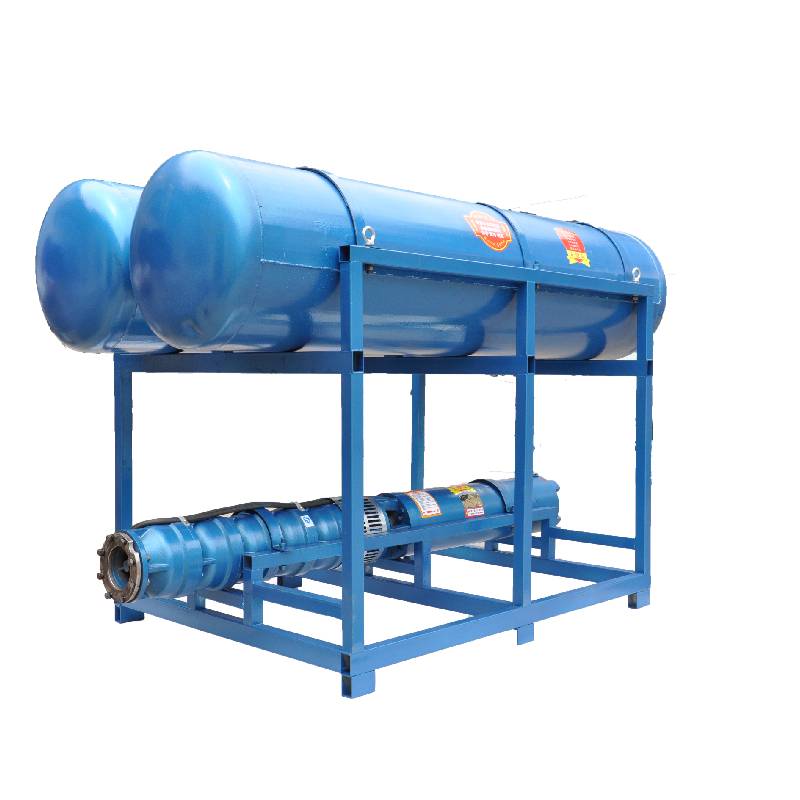Nov . 30, 2024 06:44 Back to list
Common Issues with Submersible Well Pumps and How to Fix Them
Common Problems with Submersible Well Pumps and How to Troubleshoot Them
Submersible well pumps are essential components for many water supply systems, especially in rural and agricultural settings. These pumps are designed to be submerged in water, making them highly efficient in drawing water from deep wells. However, like any mechanical system, they are prone to various issues that can impede their performance. Understanding these common problems and their solutions can save time, money, and frustration.
1. Pump Won't Start
One of the most frequent issues encountered with submersible well pumps is failure to start. This problem could arise from several sources. First, check the power supply. Ensure that the circuit breaker hasn’t tripped and that power is reaching the pump. Additionally, examine the control box for any damaged or burnt-out components.
Another cause might be an issue with the float switch, which is designed to turn the pump on and off based on water levels. If the float switch is stuck or faulty, the pump may not operate as intended. Inspect the switch for any obstructions and ensure it moves freely.
If the pump runs but provides a reduced water flow, the problem may stem from a clogged filter or a partially obstructed intake screen. Regular maintenance of these components is crucial for optimal performance. Cleaning out any debris can restore full functionality.
In some cases, the pump may be positioned too deep, or the water table may have dropped, leading to insufficient water intake. If this is suspected, well assessment is necessary to determine if the pump depth needs adjustment or if a deeper well is required.
3. Pump Overheating
Overheating is another common issue with submersible pumps. When a pump overheats, it can cause damage to the motor, leading to a complete failure. Overheating can result from several factors, including running the pump without sufficient water (dry running) or excessive cycling on and off.
submersible well pump problems

To avoid overheating, ensure that the pump is submerged properly and that it is not operating in conditions that exceed its specifications. Maintenance checks should also include verifying that the pump's motor and electrical components are in good condition and adequately cooled.
4. Noisy Operation
Unusual noises from the pump can signal a problem. Sounds like grinding, rattling, or humming may indicate wear or failure of internal components. These noises can result from loose parts, misalignment, or foreign objects trapped within the pump.
Regular inspection of the pump is advisable; debris can often be cleared before they cause significant issues. If noises persist, it may be necessary to dismantle the unit to inspect the internal components for wear or damage, and replace as necessary.
5. Vibrations and Movement
A submersible pump should sit securely in the well casing; if it vibrates or moves, it could signify an improper installation or misalignment. This not only causes noise but can lead to further mechanical failure.
To troubleshoot this issue, ensure that the pump is correctly aligned and secured within the well. Check all mounting hardware and make necessary adjustments. It might also be worthwhile to consult with professionals to ensure the installation meets all specifications.
Conclusion
Submersible well pumps are vital for many households and agricultural operations, but they require regular maintenance and prompt attention to issues that may arise. By familiarizing yourself with common problems such as failure to start, low water output, overheating, noisy operation, and vibrations, you can ensure the longevity and efficiency of your pump.
Keeping a regular maintenance schedule, conducting inspections, and addressing issues quickly will help prevent more serious complications down the line. Should problems persist despite troubleshooting efforts, seeking professional assistance is highly recommended to prevent further damage or costly repairs.
-
Submersible Water Pump: The Efficient 'Power Pioneer' of the Underwater World
NewsJul.01,2025
-
Submersible Pond Pump: The Hidden Guardian of Water Landscape Ecology
NewsJul.01,2025
-
Stainless Well Pump: A Reliable and Durable Pumping Main Force
NewsJul.01,2025
-
Stainless Steel Submersible Pump: An Efficient and Versatile Tool for Underwater Operations
NewsJul.01,2025
-
Deep Well Submersible Pump: An Efficient 'Sucker' of Groundwater Sources
NewsJul.01,2025
-
Deep Water Well Pump: An Efficient 'Sucker' of Groundwater Sources
NewsJul.01,2025
-
 Submersible Water Pump: The Efficient 'Power Pioneer' of the Underwater WorldIn the field of hydraulic equipment, the Submersible Water Pump has become the core equipment for underwater operations and water resource transportation due to its unique design and excellent performance.Detail
Submersible Water Pump: The Efficient 'Power Pioneer' of the Underwater WorldIn the field of hydraulic equipment, the Submersible Water Pump has become the core equipment for underwater operations and water resource transportation due to its unique design and excellent performance.Detail -
 Submersible Pond Pump: The Hidden Guardian of Water Landscape EcologyIn courtyard landscapes, ecological ponds, and even small-scale water conservancy projects, there is a silent yet indispensable equipment - the Submersible Pond Pump.Detail
Submersible Pond Pump: The Hidden Guardian of Water Landscape EcologyIn courtyard landscapes, ecological ponds, and even small-scale water conservancy projects, there is a silent yet indispensable equipment - the Submersible Pond Pump.Detail -
 Stainless Well Pump: A Reliable and Durable Pumping Main ForceIn the field of water resource transportation, Stainless Well Pump has become the core equipment for various pumping scenarios with its excellent performance and reliable quality.Detail
Stainless Well Pump: A Reliable and Durable Pumping Main ForceIn the field of water resource transportation, Stainless Well Pump has become the core equipment for various pumping scenarios with its excellent performance and reliable quality.Detail
